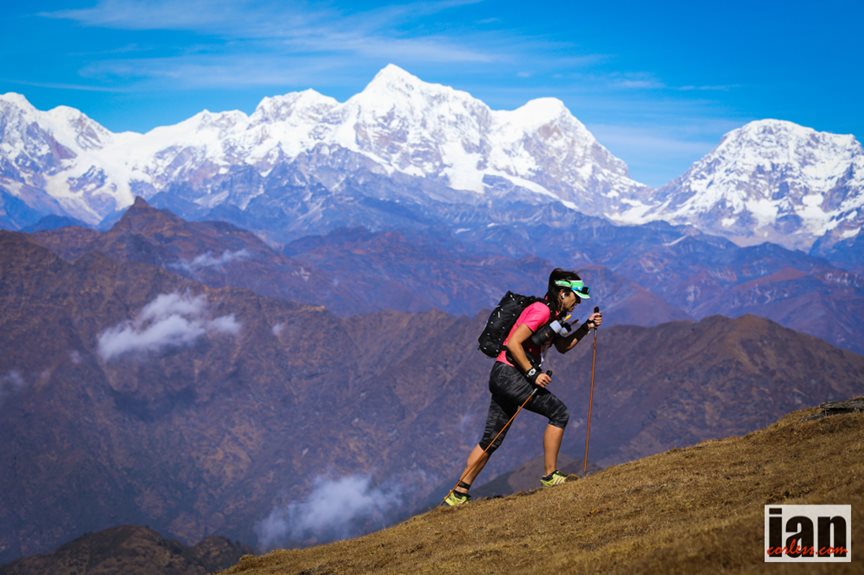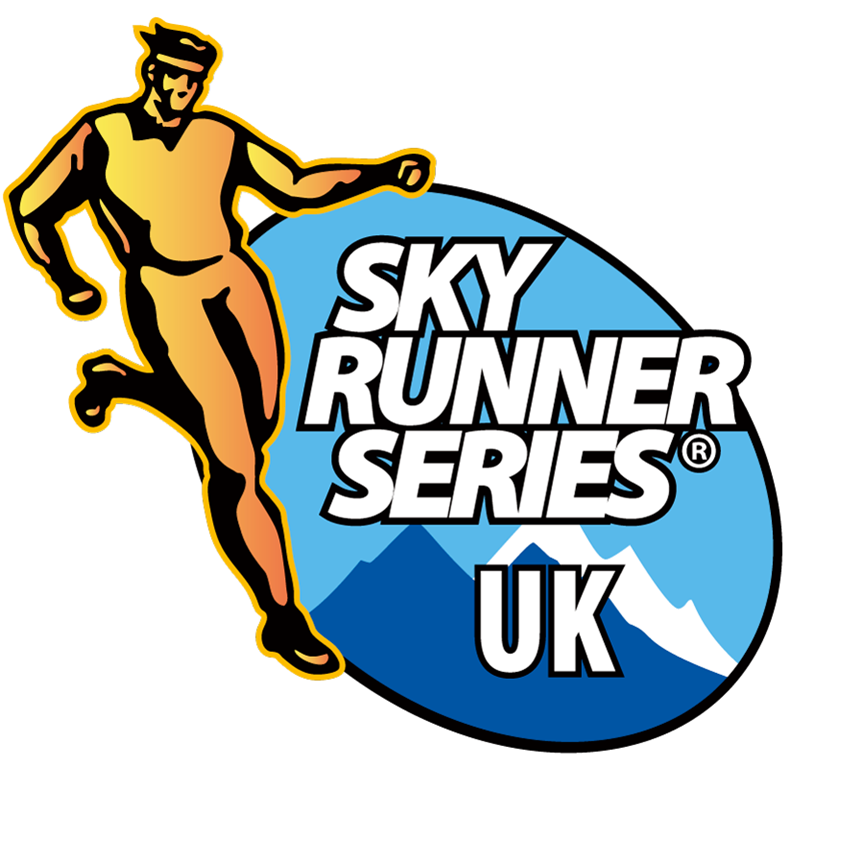Last updated: 15-Nov-18
By Luke Jarmey
Recently blitzing his way into a 3rd place in the mighty Western States 100, Mark Hammond is a name which we’re going to hear a lot more of going forward. Though a reasonably late starter to running, Mark comes from a strong ski touring and climbing background and has already notched up over a dozen wins. We had a chat to learn more about his background, his fantastic race at the Western States and his future plans.
Q. Let’s kick this off with a bit about your background, Mark. Where in the States are you from?
A. I was born and raised near Salt Lake City, Utah. I still live in that area because the Wasatch mountains are very close and have excellent terrain for running, climbing, and skiing.
Q. How did you get into running? Was it something that started in your younger years, or have you come into it more recently?
A. My parents said I liked to run a lot when I was just a few years old. I remember running a 5:50 mile in elementary school and feeling really excited about it. As a teenager I did some occasional trail running but wasn’t serious about it. I didn’t compete in any sports in high school or college. However, when I was 14 I got into rock climbing, so that’s when my passion for athletics began. My first big day in the mountains was climbing the Grand Teton and I still vividly remember how much I struggled to keep up with my brothers!
At age 18 I began backcountry skiing and that’s how I really began to build my foundation of aerobic fitness. It wasn’t until I was 27 (2013) that I began to run consistently. My main motivation for getting into running was I didn’t like sitting in an office for eight hours straight so I started running during lunch breaks.
Photo credit: Garrett Bentley.
Q. Ok interesting, let’s touch on this skiing and mountaineering for a second. Do you think this has had a major effect your running? I imagine the prolonged endurance aspect of big pushes in the mountains, must lend itself rather nicely to ultras?
A. Yes, absolutely. I strongly felt all of my effort in ski touring and climbing was building towards something important; I just didn’t realize it was preparing me to become a professional ultra runner. Climbing El Capitan was a significant experience that made other enormous tasks like ultra marathons seem more appealing. It gave me confidence that I can conquer a huge challenge by breaking it into little goals. Long ski tours and climbs are excellent mental and physical cross-training for ultras because they can keep you very active on your feet all day but without nearly as much wear and tear as ultras.
Q. Absolutely. So back to the running now, what was your first race and how did it go?
A. My first race was the Hidden Peak Challenge back in 2012. The course starts at the bottom of Snowbird ski resort and gains 3000 ft over four miles to the top. I didn’t really know how to pace myself so I went out super hard and blew up at mile one. That was a painful introduction to racing!
The following year, I ran my first ultra, the Speedgoat 50km, which is also at Snowbird. I was very intimidated by the course but I had prepared for it fairly well and paced it cautiously so I finished in a decent 29th place.
Q. What’s your preferred distance and terrain?
A. I prefer 100 milers through the mountains. Running all day is most enjoyable when I go at a wide variety of paces through mountainous terrain rather than just one pace through flat terrain. Mountain 100s hurt less than flat 100s because the variety of terrain spreads the impact over more muscles. I like races that keep me busy from dawn until dusk but I don’t like running through the whole night. Since I can finish most 100s in under 18 hours they usually fit the bill well.
Also, 100s demand a lot of respect. You really need to make an honest effort to prepare for them and execute them carefully or you’re going to get smashed. I often hear of people who “off the couch” a marathon or sometimes even a 50 miler but that rarely happens with 100s. Over that distance, even the smallest detail in nutrition, equipment, or technique can become a big problem so I usually learn more from 100s than shorter distances. The longer the distance, the less certain the outcome! I love how much drama and how many upsets there are in 100s.
Photo credit: Howie Stern.
Q. Well that’s certainly evident in your recent 3rd place in the Western States 100. Huge congrats for that by the way! How did it feel to do that well, on a race as prestigious as the Western?
A. Thank you. It was tremendously gratifying and validating to place on the podium in such a deep field. During the past four years I’ve invested an enormous amount of time in the sport. I had some very good performances before Western but because they weren’t in highly competitive races, few people noticed. Finally, I’ve indisputably proven that I belong with the world’s best ultra runners.
Q. Talk us through your race for a second. Did you have a set strategy going into it? Did it go as you imagined?
A. I wasn’t familiar with the course or the conditions so I knew I needed to be very cautious in the first half. Also, because it was such a competitive race I knew it would be easy to get caught up in the early excitement and burn myself out. So my plan was to run with Jeff Browning for at least the first 10 or 20 miles because I knew what a smart pacer he is and that he placed 3rd at Western last year.
I ran with Jeff until mile 23 then I was mostly on my own. At mile 30 I was in 10th and by mile 50, I was in 4th. Over the past few years I’ve noticed that I rarely get passed during the 2nd half of a race, especially 100 milers, so I felt very confident I could hold my position. I was shocked when I passed Jim Walmsley at mile 75 and moved into 3rd.
Then it came down to a close battle with Alex Nichols for 2nd. For the last 15 miles I was usually just a few minutes behind him and got within 30 seconds at No Hands Bridge (mile 97) but he made a fantastic surge up to Robbie Point and beat me by four minutes. It was a little disappointing to lose that battle but I was mostly just stoked to get on the podium!
Photo credit: Brion Powell.
Q. What a race! Ok moving away from racing, do you do any running projects away from set events? Coming from a ski touring/mountaineering background, I guess planning a multi-day running expedition somewhere must be a rather compelling activity to sink your teeth into?
A. I’ve enjoyed some well-known runs such as going Rim to Rim to Rim in the Grand Canyon and the Zion Traverse. Last summer I ran 80 miles across the High Uinta Mountains in Utah. There are a few multi-day projects I’m interested in. I’d like to try for the FKT on the 210-mile John Muir Trail in the Sierras. Right now the FKT is about 3.5 days. Later in my career I might try the Appalachian Trail and the Pacific Crest Trail.
Q. Tell us about one of these adventures you’ve done then?
A. My friend and I were the first known people to climb and ski Gannett Peak in one day. Gannett Peak is the highest peak in Wyoming and is about 40 miles roundtrip. We ran the first 12 miles with skis and boots on our packs then transitioned to skinning. The summit is in the middle of the Wind Rivers, one of the most wild and rugged mountain ranges in America, so it’s an awesome place to ski and run. It took about 17 hours car-to-car but could be done much faster, if attempted during late winter when many of the boulder fields still have snow coverage.
Q. Sounds awesome. Just to nerd it out for a little bit, tell us about the kit you race in. Any particular preference for style of trainer?
A. In the past I raced in Hoka Clifton 3s or Hoka Challengers depending on course conditions. I’m now sponsored by Altra so I’ll mostly race in their max cushion Olympus shoes. Generally, I train in the same shoes I race in.
Drymax socks have been my favorite thus far. I don’t like to hold water bottles in my hands when I run so I wear a vest or waist pack. Currently I use Grivel vests and UltraAspire waist packs. For night running I like to have both a headlamp and waist lamp.
Q. What does your nutrition plan look like for training days and for racing?
A. My “2 a day” training runs usually don’t last more than 90 minutes so I don’t use energy supplements for them. For long training runs and races I mostly use gel such as VFuel. I find that drinking some coke works well during races.
I don’t follow any specific diets but I try to avoid eating a lot of refined food. I mostly eat fish, eggs, raw milk, honey, fruits, veggies, nuts, and seeds.
Q. Wrapping this up, what are your future plans looking like? What major races have you got coming up for the rest of the year?
A. I’ll race at Run Rabbit Run 100 in early September then the Bear 100 in late September. My final race of the year will be TNF 50 San Francisco in mid November.
I have a long term goal to win an ultra in all 50 states of America. I’ve only got 6 states done but I’m confident I can finish the project before I turn 50!
Thanks Mark and we wish you all the best for that!





